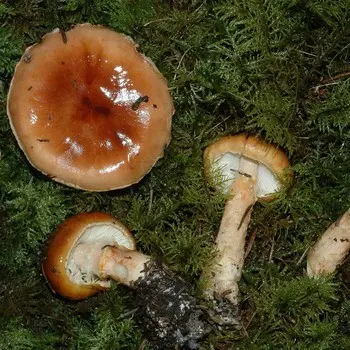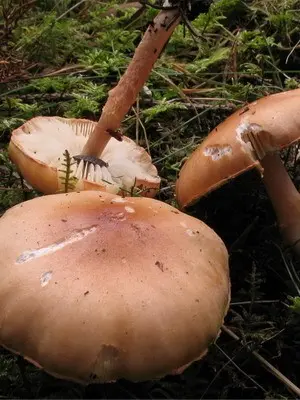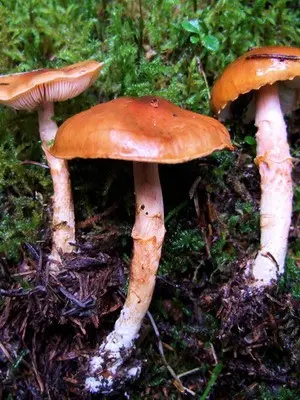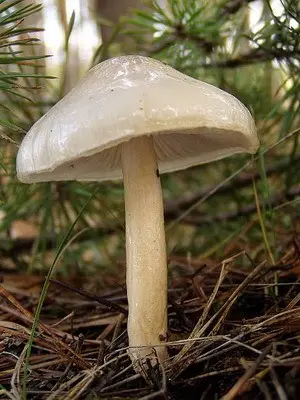 Category: edible.
Category: edible.
Hat (diameter 3-7 cm): brown or slightly reddish, in old mushrooms it can be grayish. Feels slimy and sticky. It has very thin edges, over time it changes the shape of the bell to a more prostrate one.
Leg (height 3-9 cm): usually hollow, cylindrical, covered with small flakes and scales. The color is the same as that of the cap, less often whitish.
Pulp: white, on the cut and when exposed to air, it becomes very red or pink. When broken, sticky limacella emits a distinct floury aroma.
Records: very frequent and free, white or light cream.
Doubles: tender limacella (Limacella delicata) and drip (Limacella guttata). The tender one is inedible, has no pronounced smell, and its hat does not fade as the mushroom grows. Larger drop limacella with a lighter colored cap.
When growing: from mid-July to early October in temperate European countries, in Our Country – in the Moscow and Leningrad regions, in Japan and the Far East, as well as in North America.


Where can I find: in deciduous and coniferous forests. Limacella sticky often burrows deep into fallen leaves.
Eating: although it is an edible mushroom, the properties of the sticky limacella have been little studied, so you should refrain from using it.
Application in traditional medicine: does not apply.
[ »wp-content/plugins/include-me/ya1-h2.php»]
Limacella oil (Limacella illinita)
Category: edible.


Hat (diameter 3-10 cm): usually white, gray or light brown. In a young mushroom, it has the shape of a hemisphere, with time it changes to an almost prostrate one with thin and translucent edges and a slightly pronounced tubercle. To the touch, oily limacella is rather slippery.
Leg (height 3-11cm): in the form of a cylinder, a little slippery.
Pulp: white color, which does not change on the cut or when broken. The aroma of limacella oil is similar to perfumery.
Records: white or with a faint pink tint.
Doubles: are absent.
When growing: from early August to mid-October in the northern countries of Europe, Asia, North America and Africa.
Where can I find: on soils of all types of forests.
Eating: dried or fried.
Application in traditional medicine: does not apply.









